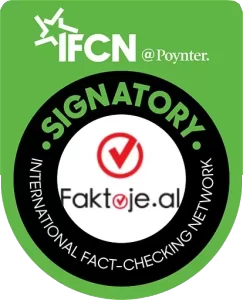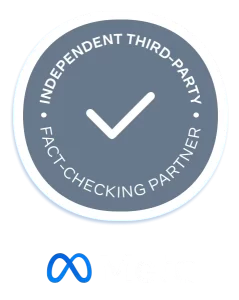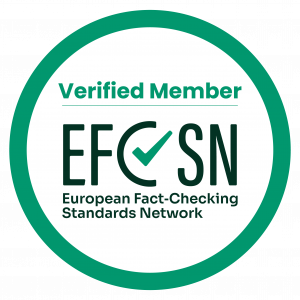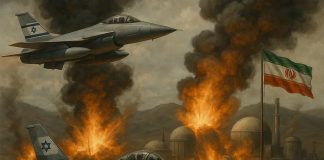Northern Mitrovica has returned to the center of conflict between Kosovo and Serbia, leading to acts of violence against security forces and journalists. Amid developments on the ground and diplomatic disputes among interest groups, the situation has been marked by extreme narratives that have taken hold in the media and portals of both countries and beyond. Reports with sensational headlines and unverified information about Mitrovica only contribute to manipulation and the spread of panic and ethnic hatred in the public opinion.
Barbara Halla
Since May 26, the cities of Leposaviq, Zveçan, and Zubin Potok in northern Kosovo have been engulfed in turmoil and protests. These protests escalated after the three mayors who won the May 26 elections, accompanied by Kosovo police forces, entered their official buildings to begin their work. The validity of the May elections has been questioned, as only 3.47% of the population participated in the voting, which was boycotted by Serbian parties.
The decision of the Kurti government to have the mayors start working in their official buildings in the north was met with protests from the local Serbs. The clashes between protesters and Kosovo police turned violent, especially in Zveçan. This led to the mobilization of KFOR forces, who also faced serious confrontations, with protesters hurling projectiles at them and journalists. On May 30, it was reported that 30 KFOR soldiers were injured in these clashes, prompting KFOR to deploy additional troops to the north.
In the second week of June, the protests began to subside in numbers, although there were instances of violence against journalists on June 16, this time in Leposaviq. Currently, the political situation between the two countries remains tense. Northern Kosovo has been a frequent source of tension in recent years, especially when the Albin Kurti government has sought to assert its sovereignty in the north, even through legislation, such as the non-recognition of license plates or identity cards issued by Serbia. On the other hand, Serbia has portrayed these laws as maneuvers to oppress Kosovo’s Serbs, further fueling tensions.
In the shadow of violence and tensions, both Albanian and Serbian media have also spread propaganda from certain angles about the recent tensions. Often, these news, even though they may start from an analysis of the situation, use exaggerated language that not only spreads panic about an ethnic conflict in the north (a conflict already warned years ago), but also incites hatred against specific groups. Below you will find an analysis of the main narratives that emerged during the past two weeks.
The Conflict from Kosovo’s Perspective
For many Albanian-speaking media, tensions in northern Kosovo were a direct result of maneuvers by Serbia. An article by analyst Genc Burimi was widely distributed by Albanian media with a sensational headline.

Source: BalkanWeb
In fact, Burimi’s analysis goes deeper than the bombastic title suggests. He does not state in this analysis that Vučić will initiate a war in the Balkans, but that Vučić, inspired and supported by an alliance with Russia, uses the military as a tactic to intimidate the region and advance Serbia’s agenda. According to Burimi, the West’s decision to appease Vučić while criticizing Kosovo does nothing but give Vučić more impetus to continue with these tactics.

Burim: Gazeta Shqip
This narrative, that Serbia is trying to create a clone of the situation in Ukraine, has also been reiterated by former Albanian Foreign Minister Edmond Panariti during the ‘Frontline’ show. There is a tendency among Albanian media to omit the details and nuances of the arguments raised by analysts, who are not talking about the arrival of a new war in the Balkans, but about how Serbia is using a specific strategy towards Kosovo to further its own interests.
But it has not been only analysts who have blamed Serbia for the situation in northern Kosovo. Prime Minister Albin Kurti has also described the protests in the north as being organized by Belgrade under Vučić’s orders.

Burim: Nacionale
In fact, one of the most widely spread narratives, both by traditional and social media, which has been closely following the situation step by step, is precisely that the protests in the north are not a legitimate expression of the people’s desires but rather actions orchestrated by criminal gangs operating under Vučić’s orders. This has also been written by a highly followed Twitter account, where one of the protesters committing violence against KFOR forces has been identified as a police officer from Serbia, described as someone sent by Vučić himself to cause unrest.

Burim: ABC News
Kurti reiterated this accusation in a meeting with representatives of the EU and the US on June 6. In a statement given on June 9, KFOR itself admitted that there were different criminal groups involved after the protests in the north. However, Colonel Andrea Gallieni also highlighted the existence of peaceful protests.
“During the protest, many KFOR soldiers were injured by stones, improvised explosive devices, and firearms. It was clear where people were trying to demonstrate and protest peacefully, but it was also clear that behind them were several criminal groups attempting to attack KFOR troops,” he said.
Conflict from Serbia’s Perspective
Meanwhile, both Serbian media and the government blame Kosovo and the West for the situation created in the north.

Burim: ABC News
Firstly, it was claimed that everything was orchestrated by Albin Kurti to incite a conflict between Serbs and NATO, and he is solely responsible. In fact, there is no evidence that Kurti orchestrated the situation to cause conflict between Serbs and NATO. The inauguration of the new mayors was part of Kurti’s political strategy to secure Kosovo’s sovereignty throughout its territory.

Burim: TPZ
Vučić also supported the narrative that Serbs in the north were not responsible for the violence, but it resulted from the actions of Kosovo police and KFOR forces. This accusation by Vučić was also supported by the Kremlin, as the Russian Ministry of Foreign Affairs made statements saying that Serbs should not be blamed for the violence and tensions in the north.

Burim: Ora News
Both Vučić and the Kremlin claim that the violence came from Kosovo police, and Serbs were simply responding to defend themselves. However, KFOR’s investigations show that various Serbian criminal groups were involved in the violence against the police, soldiers, and journalists, especially in Zveçan.
Beyond official statements, Serbian media also fueled the flames of discord with misleading and false headlines. For example, the Serbian version of Russia Today published an opinion stating: “The USA and NATO are preparing a revolution in Serbia with the help of Kosovar Albanians.”

Burim: Russia Today
The article claims that NATO and the US are preparing Kosovar Albanians to wage war against Serbia, and for this reason, Serbs in Kosovo have risen in protests. This article is based on the opinion of a Russian researcher and contains no verifiable facts, as presented by the fact-checking organization Hybrid.
International Reactions
Furthermore, both the US and the EU have been very critical of Kosovo, blaming Kurti as the main culprit for the situation in the north. Since the first day of protests on May 26, US Secretary of State Antony Blinken, condemned Kosovo’s stance, saying that the decision to put the mayors to work in official buildings went against the agreement between Kosovo and the US.
On May 30, the US Ambassador to Kosovo, Jeffrey Hovenier, published a package of sanctions against Kosovo, including cancelling participation in the military exercise Defender-23. Two weeks later, the EU also took several measures (which it did not label as sanctions) against the Kosovo government. These measures involve suspending high-level government visits and meetings between EU countries and the Kosovo government and may also affect the work of groups engaged in the Stabilization and Association Agreement (SAA).
Both the US and the EU are asking the Kurti government to reduce tensions by relocating the mayors from the buildings where they work to alternative premises, removing special forces around the buildings, organizing new elections, and starting work on the Association of Serb Majority Municipalities. Kurti, however, stated that elections can be held if there is security that this time the Serbs in the area will participate. Moreover, the Association continues to be a point of contention as there are several drafts for its format, but no final format that satisfies all parties.
The situation in the north escalated on June 14 when three Kosovar police officers were abducted by Serbian police forces on the accusation of violating Serbian territory. This event has rekindled fear, and the US has called on Serbia to release the Kosovar police officers and for both countries to return to the negotiating table.






